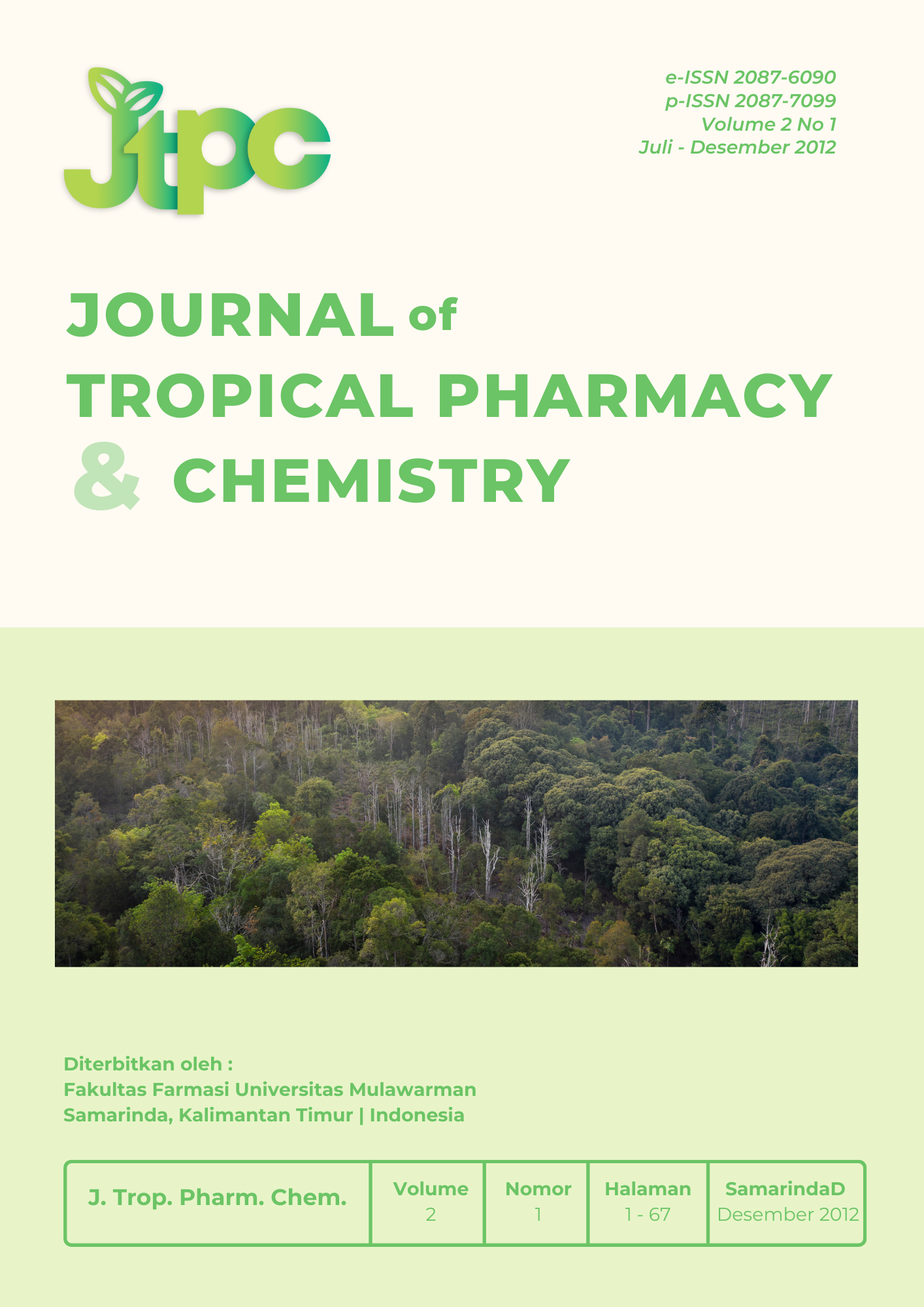Pengaruh Penggunaan Pati Biji Cempedak (Arthocarpus champeden Lour) sebagai Bahan Pengikat terhadap Sifat Fisik Tablet Parasetamol secara Granulasi Basah
Keywords:
Cempedak seed starch (Arthocarpus champeden Lour.), paracetamol tablet, wet granulationAbstract
The research about influent the use of cempedak seed starch (Arthocarpus champeden Lour) as a binder to the physical properties of paracetamol tablet in wet granulation has been conducted. Cempedak seed starch can improve the quality of materials, increase the viscosity, gelation ability, rehydration ability and increase the solubility. Paracetamol tablet be made in three formulas, with various concentration binders formula FA 6%, FB 8% and FC 10%. The resulting granules and tablets were evaluated. Granule evaluation includes fluiditas test and moisture content. Tablet evaluation includes uniformity of weight test, uniformity of size, hardness test and disintegration test. Granule evaluation results show that all formulas has qualified, except granule formula FA wich contain moisture 1.78%. Tablet evaluation results show that all formulas has qualified FI Ed. IV. Whereas for hardness test, tablet formula FA not eligible because it has hardness 3.8 Kg/cm2. The results of this research indicate that cempedak seed starch can be used as a binder in the manufacture of wet granulation paracetamol tablets. The higher the concentration used cempedak seed starch, than produced a good tablet. Cempedak seed starch can be used as a binder in concentration 8% and 10%.
Downloads
References
1. Lachman L., Herbert A.L., and Joseph L.K. 1986. The Theory and Practice of Industrial Pharmacy. Philadelphia: Lea & Febiger.
2. Siregar, C. J. P., 2010. Teknologi Farmasi Sediaan Tablet. Jakarta: Penerbit Buku Kedokteran.
3. Agoes, G. 2008.Pengembangan Sediaan Farmasi. Bandung: Penerbit ITB.
4. Wade, A dan Weller, P.J (eds).1994.Handbook of pharmaceutical excipient. 2nd ed. Washington: American Pharmaceutical Association.
5. Jufri, M., Dewi, R., Ridwan, A., Firli. 2006.Studi Kemampuan Pati Biji Durian Sebagai Bahan Pengikat Dalam Tablet Ketoprofen Secara Granulasi Basah.MIK.Vol. III no. 2. Hal. 78-86
6. Firmansyah, Deswita, Y., Ben, E.S. 2007.Ketersediaan Hayati Tablet Parasetamol Dengan Menggunakan Pati Nangka (Arthocarpus heterophyllus
Lamk.)Sebagai Bahan Pembantu. JSTF. Vol. 12 no. 2.
7. Erna, Y., Widyastuti. 1993. Nangka dan Cempedak, Ragam, Jenis dan
Pembudidayaan. Jakarta: Penebar Swadaya.
8. Anshari, H., Olenka, D., Marliana, M. 2010.Pemanfaatan Biji Cempedak Sebagai Alternatif Pengganti Tepung Terigu Dengan Kualitas dan Gizi
Tinggi. Laporan Penelitian Program Kreativitas Mahasiswa. Universitas Negeri Malang. Malang.
9. Anonim. 1995.Farmakope Indonesia. Edisi IV. Jakarta: Departemen Kesehatan Republik Indonesia.




